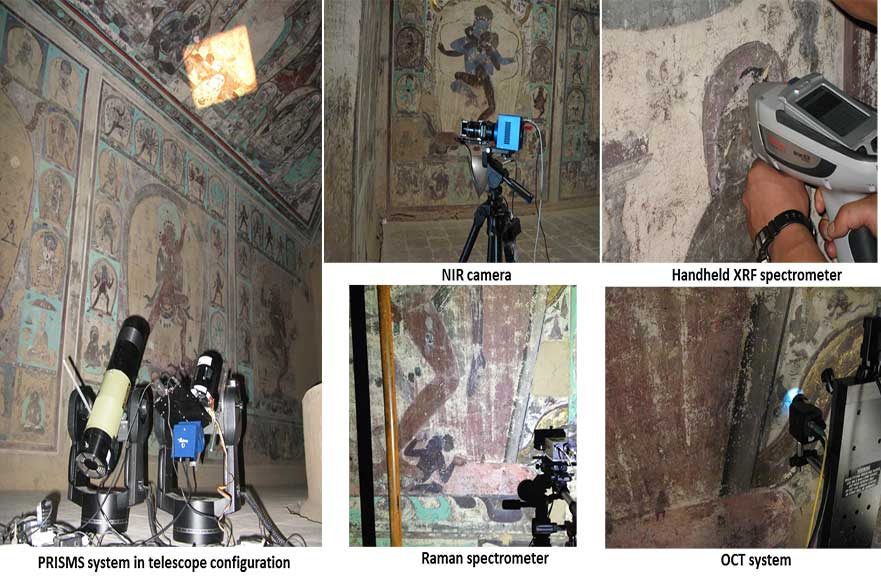Project
Non-invasive analysis and large scale imaging of murals at the UNESCO World Heritage Site of Mogao caves in Dunhuang
Unit(s) of assessment: General Engineering
Research theme(s): Safety and Sustainability
School: School of Science and Technology
Overview
The Mogao Caves, near Dunhuang, form many Buddhist temples along the ancient Silk Road. They have a history that extends over 1,000 years and are now a UNESCO World Heritage Site. The 45,000 square metres of wall paintings in nearly 500 caves are an immense resource for the study of the history of art, architecture, religion, technology, politics and cultural exchange.
However, the wall paintings of this historical site are vulnerable, and therefore any inspection needs to be non-invasive and non-contact. In addition, some of the caves have high ceilings that are not easily accessible, making it difficult to conduct scientific investigation.
The aim of this project is the development of a methodology for the non-invasive and in situ analysis of the large scale murals, even when they are located in unreachable areas (e.g. ceiling of the cave). Our research was mainly focused on the analysis of the murals of cave 465, a cave of which construction dating is under debate.
Addressing the Challenge

The ISAAC mobile laboratory in cave 465, Mogao caves
The collaboration with the Dunhuang Academy was initiated in 2011, and since then the ISAAC mobile laboratory has visited the site of the caves several times, applying a range of non-invasive imaging and spectroscopic analytical techniques. More specifically, spectral imaging has been applied on large mural surfaces using the PRISMS system in the telescope configuration.
This enabled the imaging of painted areas located also on the ceiling of the caves. Hyperspectral imaging has been also applied on areas of special interest, using the high resolution version of PRISMS system in the telescope configuration.
The performance of OCT (Optical Coherence Tomography) measurements enabled the high resolution, depth resolved observation of both the structure of the paint layers and the applied paint sequence. Moreover, a range of spectroscopic techniques, from FORS to Raman and XRF spectroscopies, were complimentarily used providing detailed identification of the involved paint materials.
Making a Difference
In the context of this project, a methodology for the automatic analysis of large scale spectral imaging data was developed. Moreover, for the first time, a total non-invasive and in situ examination of various degraded paintings was performed, enabling the extraction of results for the composition of the original paint layers. The identification of the materials used as well as the observation of the paint techniques provided very important information about the history of the analysed caves.
People
Academic Investigator: Professor Haida Liang
Co-Investigator
- Prof Bomin Su
Research Fellows
- Dr Chi Shing (Sammy) Cheung
- Shui Biwen
- Zhang Wenyuan
- Yu Zongren
Research Assistants
- Rebecca Lange
- Andrei Lucan
Research Students
- Sotiria Kogou, PhD
- Alex Hogg, MSci
- Stuart Christian, BSc